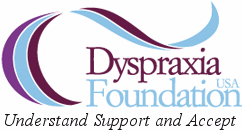This Is How To Take Notes
Note taking can seem overwhelming. If you are trying to write down everything, have trouble spelling, or have trouble remembering what was said, notetaking can seem daunting. I was working with a young woman a few weeks ago. Let’s call her Sarah. Sarah is in the 10th grade, she is smart, funny, involved with school activities and has ADHD. The ADHD characteristic that is causing the most trouble is her poor memory.
I suggested to Sarah that she takes her notes differently than she was. I will discuss this format in a moment. She was less than thrilled about this idea and wasn’t very willing to try it. When I went to see her the following week and asked her how the note taking went. She said, “Funny story, my LA teacher talked about that kind of notes this week in class and had us take our notes that way.” Sarah isn’t convinced yet but is willing to admit that they could be helpful. These notes are the best way to take notes.
The notes I am talking about are called Cornell notes. They were invented in the 1950’s by Walter Pauk, who was a professor at Cornell University. Can I just say that notes that have been around for 60 plus years must have something going for them, don’t you think?
Here is the how to take C-notes:
- On the top put in a heading that includes the date, subject, and topic. (i.e. Subject might be US History and the topic might be the Continental Congress)
- On the left using 30% of the page, you will have a column where you put keywords and questions. This is sometimes called the Cue Column. Don’t overdo the questions; maybe limit yourself to five at the most.
- On the right using 70% of the page, you will have a column where you take notes, draw graphs and charts or pictures to illustrate a point or doodle if necessary. Use your own words if possible but don’t write in full sentences, use abbreviations. If you Google abbreviations for note-taking all kinds of examples come up.
- On the bottom using 5-7 lines is an area for a summary, which you write later.
Here are some common cues for knowing what to write down:
- The teacher says to write this down
- The teacher repeats the information
- The teacher says it is important
- The teacher writes it on the board
- The teacher says you might see this again
- The teacher hints that this information will be on your exam
- The teacher says it is not in your textbook but is important
Here is how to use C-notes:
- Record – By putting keywords on the left and notes on the right during class.
- Ask questions – As soon as possible after class, read the notes and write questions on the left. Writing the questions helps to clarify what additional information you need.
- Recite – Cover the right side of the paper or fold the paper between the two columns. Using the keywords as a guide; talk (yes, out loud is best because we are 50 times more likely to remember what we say versus what we read silently). Or answer the questions, or teach it to someone else.
- Think – Ask yourself some deeper questions like
- What’s the significance of these facts?
- What principle are they based on?
- How can I apply them?
- How do they fit in with what I already know?
- Review – Daily read over previous notes for at least ten minutes a day. The more often we interact with information the more likely we remember and learn it so if you read the notes daily you will retain the information for your exam. And probably much longer. This is why I asked Sarah to take these type of notes to help improve her ability to remember what she was taught.
Here is where you can buy Cornell notepaper:
I strongly encourage students from middle school through graduate schools to use Cornell notes. Try it and not just for a day or a week. Yes, there is more involved but over the long haul, you will learn more with less stress and cramping and actually same time.


Big Bang Coaching, LLC provides coaching for the neurodiverse.




